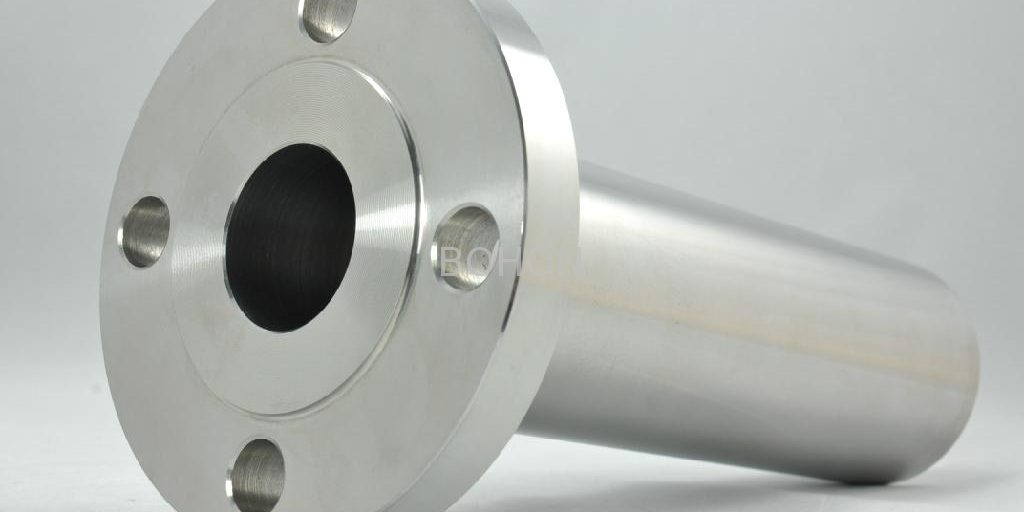Long-necked butt welding flanges are common dedicated connections used in industries such as energy, petroleum and petrochemicals. They are commonly found in complex piping systems that serve multi-storey buildings and refineries. But why are they considered the perfect pressure vessel connection for these piping systems? Here are some of the reasons:
Example of a long butt welding flange from HT GROUP, the world’s premier manufacturer of long butt welding flanges
Easier alignment, installation, and testing
The design of the long butt welding flange makes it easy to align with the pipe network on which it is installed and produces a stronger weld. Another benefit of this design is that it is very easy to use when checking the integrity of the weld through radiographic testing.
Ensure a smooth flow of liquids passing through them
Since the drilling of the long butt welding flange matches the inner diameter of the pipe itself, the flow of high-pressure liquids is not hindered. This design ensures that there is almost no “turbulence” within the pipe, which is a common cause of corrosion, resulting in a stronger and more durable pressure vessel connection.
Handles high pressures and temperature fluctuations well
Due to the nature of the oil, gas and petrochemical industries, the piping systems used in them must transport large quantities of liquid over long distances. This requires the system to use a lot of pressure to force the liquid to flow along the pipe. In addition, these pipes are usually built in a very harsh hot and cold environment. The design of the long butt welding flange helps to mitigate the constant changes in pressure and temperature that piping systems encounter as they flow through common piping systems with twists, turns, and elevation changes.
Very powerful and reliable
Long butt welding flanges use long tapered wheels that gradually increase the thickness of the pipe from the weld all the way to the flange face. This design ensures that the internal stress generated by the flow of the high-pressure liquid is transmitted to the pipe, thereby reducing the stress on the flange itself.






